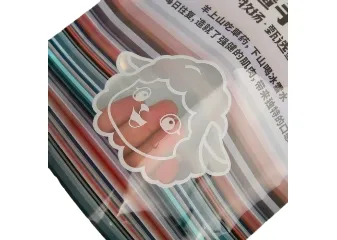Understanding Vertical Sealers A Comprehensive Guide
In the world of packaging, vertical sealers play a pivotal role in ensuring that products remain fresh, secure, and ready for distribution. These machines are essential in various industries, including food processing, pharmaceuticals, and consumer goods. This article explores the functionality, advantages, and applications of vertical sealers, highlighting their importance in modern manufacturing and packaging processes.
What is a Vertical Sealer?
A vertical sealer is a packaging machine designed to seal products in a vertical position. Unlike horizontal sealers, which operate with products placed flat, vertical sealers are commonly used for liquid or powder products that might flow or spill if not contained upright. These machines employ heat sealing, ultrasonic sealing, or impulse sealing technologies to create airtight seals, which are crucial for maintaining product integrity.
Functionality of Vertical Sealers
The operation of vertical sealers typically involves the following steps
1. Feeding the Product Products are placed in pouches or bags, which are then fed into the sealing chamber. The design of the machine often includes a hopper or feeder that allows for continuous operation.
2. Sealing Process Once the product is positioned, the machine uses heating elements to melt the edges of the packaging material, forming a seal as it presses the edges together. The sealing quality is determined by the temperature, pressure, and timing settings on the machine.
3. Cutting (if needed) Many vertical sealers also come equipped with cutting mechanisms to separate individual packages after sealing, allowing for efficient, streamlined production.
4. Exit and Collection Finally, the sealed products exit the machine, ready for further processing, labeling, or direct shipment.
Advantages of Vertical Sealers
Vertical sealers provide numerous benefits that make them an ideal choice for various applications
vertical sealer
- Space Efficiency The vertical design allows for a smaller footprint compared to horizontal sealers, making them suitable for environments with limited space.
- Versatility These sealers can handle a diverse range of products, from liquids and powders to granules and solids, in various types of materials, such as plastic films, foil, or compostable packaging.
- Improved Sealing Quality Since vertical sealers often use advanced sealing technology, they provide consistent, high-quality seals that increase shelf life and reduce the risk of contamination.
- Automation Capability Many vertical sealers can be integrated into automated production lines, enhancing efficiency, reducing labor costs, and minimizing human error.
Applications of Vertical Sealers
Vertical sealers are widely used across different industries
- Food Industry In the food sector, vertical sealers package products like snacks, frozen foods, sauces, and powdered ingredients. The airtight seal helps to preserve freshness, flavor, and nutritional value.
- Pharmaceuticals In the pharmaceutical industry, maintaining product integrity is paramount. Vertical sealers are used to package tablets, powders, and liquids, ensuring that medications remain uncontaminated and effective.
- Consumer Goods Many everyday products, such as cleaning supplies and personal care items, are packaged using vertical sealers. This helps manufacturers achieve efficiency and maintain product quality.
Conclusion
Vertical sealers are indispensable tools in the packaging industry, offering efficient, reliable, and versatile solutions for sealing a wide range of products. Their ability to provide airtight seals and accommodate various materials makes them an essential component of modern manufacturing processes. As industries continue to evolve, the role of vertical sealers will undoubtedly grow, ensuring that products remain safe and high-quality from production all the way to the consumer’s hands. With advancements in technology, these machines will become even more efficient and capable, further shaping the future of packaging.